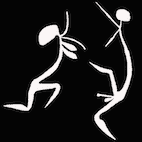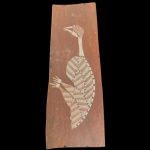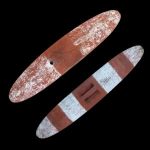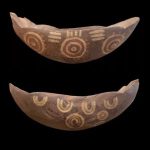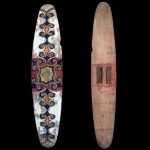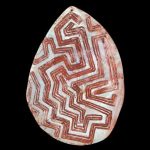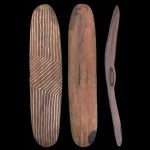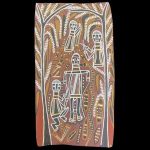ABORIGINAL BARK PAINTINGS
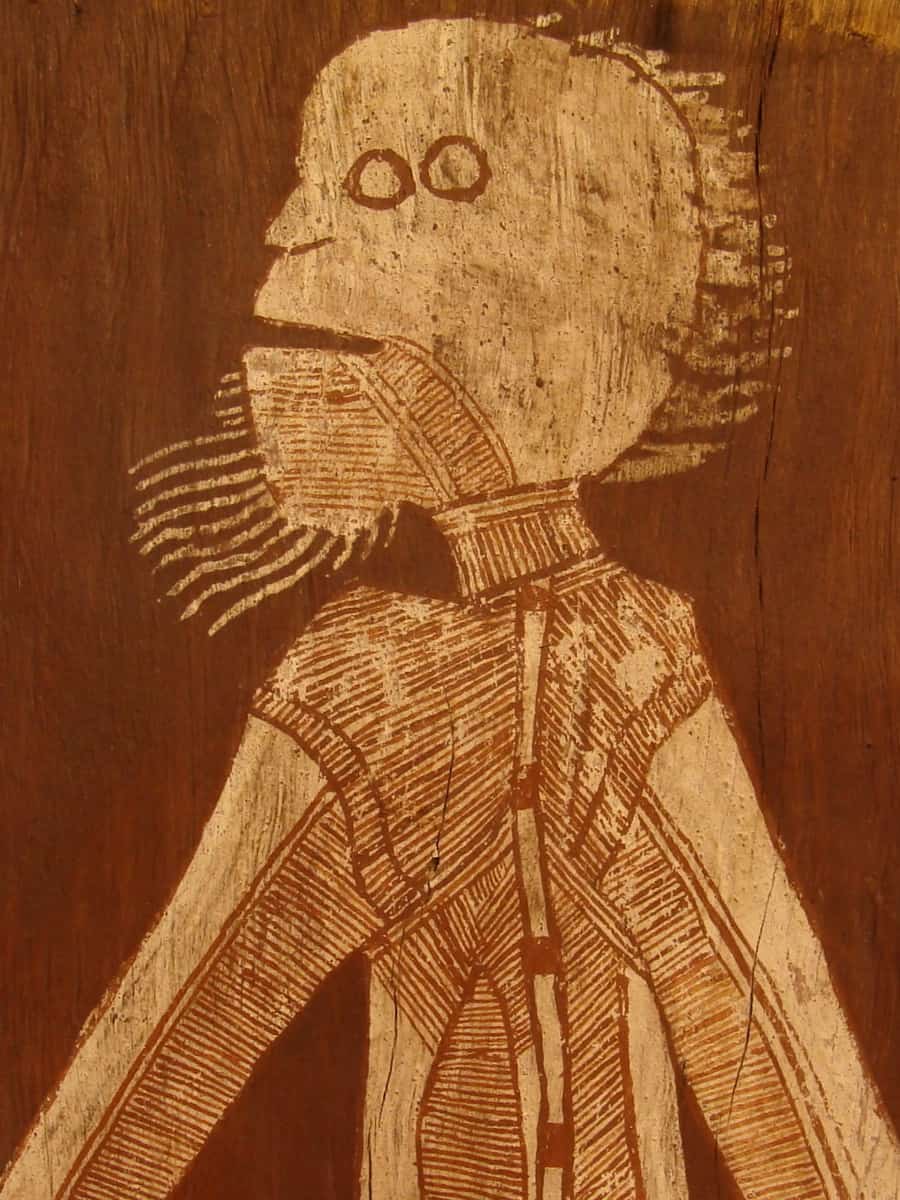
Aboriginal bark paintings specialize in Early Aboriginal Bark Paintings, Aboriginal Weapons, and important early aboriginal art.
I specialize in Aboriginal Art from the pioneer artists of the numerous aboriginal Art Movements in Australia.
Always Looking for new material to buy and sell
Latest Articles
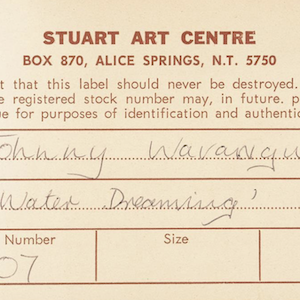
Stuart Art Centre
The Stuart Art Centre: A Key Player in the Birth of the Western Desert Art Movement The Stuart Art Centre, located at Box 870, Alice Springs, NT 5750, may have been a small, unassuming gallery, but its role in the emergence of the Western Desert art movement and the...
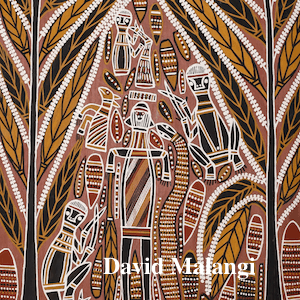
David Malangi
David Malangi Aboriginal Art Indigenous Australian Artist David Malangi is best known for an artwork published on the Australian One Dollar bill. He was a prolific artist who painted for over 30 years. His most collectible paintings depict a Mortuary Feast of the...
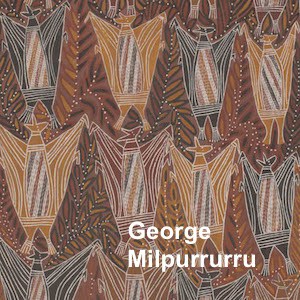
George Milpurrurru
George Milpurrurru Aboriginal Art George Milpurrurru is an Indigenous Australian artist who painted on bark in the 1970s. He is best known for his paintings of the birds and animals of Arafura swamp. He uses repetition of images to give the impression of abundance and...
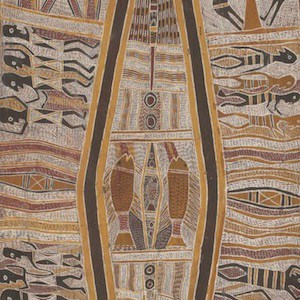
Narritjin Maymura
Narritjin Maymura Yirrkala Bark Painter Narritjin Maymura is one of the best-known and most prolific Yirrkala bark-painting artists. Examples of his bark painting are in collections throughout the world. The aim of this article is to assist readers in...
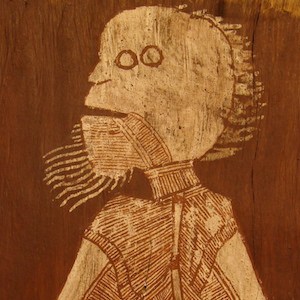
Bardayal X Ray bark Paintings
Bardayal : Master of oenpelli Lofty Bardayal Lofty Bardayal was one of the best and most prolific Aboriginal bark painters from Oenpelli in Western Arnhem Land. He stuck true to his rock painting background and did not incorporate styles from other areas. I collect...
Information About Aboriginal bark painting
The Origins of Bark Painting
Bark painting is an ancient Aboriginal tradition where dried bark stripped from trees is painted using natural ochres. One of the earliest documented instances of this practice dates back to 1800, when French artist Nicolas-Martin Petit, traveling with Nicolas Baudin to Tasmania, recorded painted bark shelters over graves. This was not an isolated instance; similar bark shelters were later found in Victoria and New South Wales. These artworks, often created by scratching or painting onto smoke-blackened bark with charcoal, reflect the deep cultural significance of this medium to Aboriginal communities.
The Evolution of Bark Painting and Early Discoveries
The oldest surviving examples of bark paintings date from the 19th century, with one of the earliest pieces—a bark etching of a kangaroo hunt—collected by British explorer John Hunter Kerr near Boort in northern Victoria. This piece is now housed in the British Museum. Over time, bark paintings were discovered in regions like the Kimberley and Arnhem Land, often depicting stories passed down to children during long wet season periods spent in shelters. In places such as northeast Arnhem Land, painted bark was also used for coffins and belts, while in the Tiwi Islands, it played a role in death rituals.
The 20th Century: Modern Bark Painting Emerges
By the early 20th century, the practice of bark painting evolved into its modern form. In 1912, Baldwin Spencer commissioned works from Gunbalanya (Oenpelli), which garnered significant attention from art collectors. Spencer valued these works not only for their cultural significance but also for their aesthetic appeal. Missionaries like Reverend Thomas Theodor Webb and Reverend W. Chaseling also encouraged the production of these paintings to help fund mission activities and raise awareness of Yolngu culture in Australia.
Collectors and Growing Demand for Bark Paintings
Between the 1930s and 1950s, anthropologists and missionaries became major collectors of bark paintings. Key figures in this period included Norman Tindale, W. Lloyd Warner, and Charles P. Mountford. In the 1960s, demand for Aboriginal art surged, largely due to mission shops. A significant moment in the history of Aboriginal art came in 1963, when the Yolngu people presented the Yirrkala bark petitions to the Australian Parliament. This marked the first legal recognition of Indigenous Australians in Australian law and sparked greater interest in their culture and art.
The Establishment of Aboriginal Art Markets
In 1971, the Australian government established a centralized marketing company for Indigenous art, while the Aboriginal Arts Board of the Australia Council began supporting community arts centers in 1973. This led to the growth of places like Maningrida, Ramingining, and Katherine as key centers for promoting bark paintings. Today, many of these artworks are created for the art market, although some artists continue to produce traditional designs that preserve their cultural heritage.
The Styles and Techniques of Arnhem Land Bark Painting
Bark painting in Arnhem Land is renowned for its rich tradition, encompassing distinct yet interconnected visual languages. In western Arnhem Land, the style is closely related to rock art, often featuring figurative imagery that emphasizes lifelike representations. On the other hand, artists from eastern Arnhem Land tend to focus on geometric patterns and clan symbols, which hold deep spiritual meaning. Artists from central Arnhem Land often blend these two approaches, incorporating both figurative and abstract imagery in their work.
Crosshatched Patterns and Use of Natural Materials
A key feature of Arnhem Land bark paintings is the intricate use of crosshatched patterns, known as rarrk in the west and miny’tji in the east. These fine designs are believed to carry ancestral power and symbolize the influence of ancestral forces. The patterns are applied with a short-handled brush made from human hair, a technique that mirrors the ceremonial body painting done during cultural rituals. The color palette typically includes natural ochres, charcoal, and white clay, with binders traditionally made from egg yolk or orchid juice, although some artists now use water-soluble wood glues.
The Creation and Preservation of Bark Artworks
Bark paintings are created on Eucalyptus tetrodonta (stringybark), which is carefully harvested during the wet season. Once stripped, the bark is cured over fire and flattened under weights to prepare it for painting. This process ensures the bark’s durability, making it an ideal medium for creating these significant and culturally rich artworks. Despite modern changes in techniques and materials, the essence of bark painting remains rooted in tradition, maintaining its place as an important form of Aboriginal artistic expression.
Returns policy
All artworks and artifacts are guaranteed to be as described. If a purchase is not as described or not shown accurately in the photos then I am happy to accept returns. Postage will be at the buyers expense.
About Me
My name is Richard Aldridge and I am a keen collector and dealer of both early Aboriginal art and antique tribal art. Some of the Aboriginal bark paintings that I purchase stay in my collection. Other Aboriginal bark paintings I make sure go to people who appreciate them.
It is important that certain significant pieces of Aboriginal Art make their way back to Australia. Sometimes it is worthwhile getting such pieces into a public institution where they can educate and be enjoyed by all Australians.
I have exhibited in America and New Zealand and contributed to several tribal art publications.
I have been dealing in indigenous art for over 25 years and I still enjoy seeing new pieces and where possible sharing my knowledge.
Aboriginal bark paintings is my passion so feel free to contact me.
Selling
Want to sell your aboriginal bark painting?
The process is really easy.
Take a couple of images of the piece you want to sell and send them to me by email, along with the dimensions. Please include photos of any labels or numbers on the back.
The value of your bark painting will depend on the Artist, condition, age, size and of course the image.
I will pay you the best price
When I get your email I will let you know how much I am willing to pay for your artwork
If you are happy with the price I will then send you money by direct bank transfer or
I have great clients for top quality pieces so I can pay very well for pieces.
I also Buy New Guinea Tribal Art
How much is it worth
If you are interested in knowing what your Aboriginal Bark paintings are worth because you are considering selling it then I am happy to help for free.If you need an officially written valuation of your Aboriginal bark paintings or Aboriginal artifact for insurance reasons, then you need to pay for a certified valuation. Contact me I can help.I am always happy to see pieces of aboriginal art and can give you a value as to what your piece is worth to me.If you are living outside Australia getting good advice as to what your aboriginal bak paintings are worth can be difficult. It is an extremely specialized field and most antique dealers and auction houses do not have a clear idea of values.If you have a bark or a shield or any artifact from Aboriginal Australia then contact me via email with a couple of clear photos and dimensions.
I only sell Authentic Aboriginal bark paintings and Aboriginal Artifacts.
All purchases may be returned for a full refund of the purchase price if not as described within five days of receipt of the item. Shipping costs are extra.
All items for sale on this web site are on a first come basis. Payment by Direct Deposit or Paypal
Some items if so marked will not be sent out of Australia in accordance with Australian Legislation.
I guarantee that all items are as described and that photos are an accurate representation of the piece on offer.
